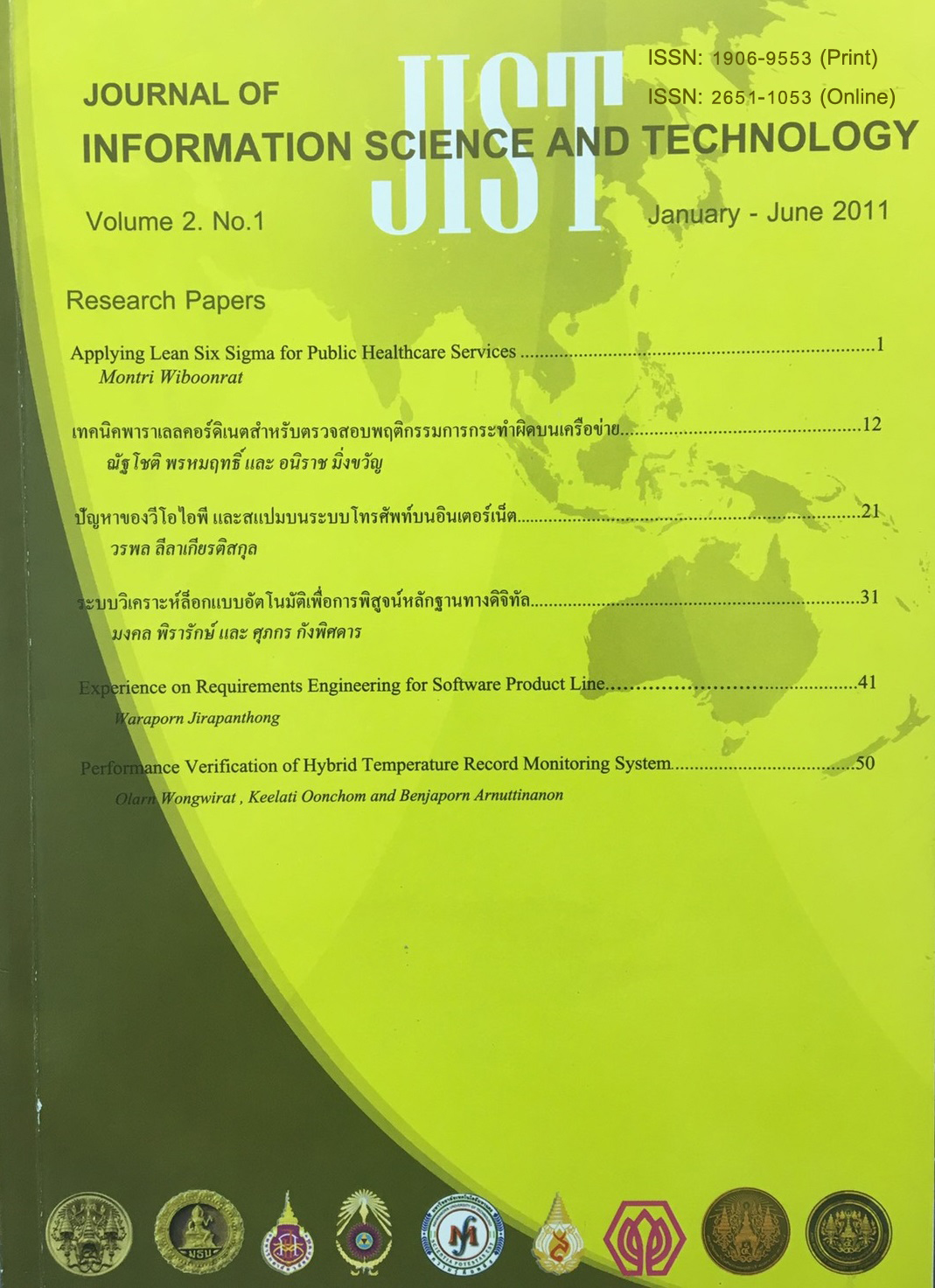Experience on Requirements Engineering for Software Product Line
Main Article Content
Abstract
- Software product line has been recognised as an important paradigm for software systems engineering. However, it has been quested whether software product line-based approach is more productive and flexible than a single software development process. This paper thus describes the experiences and challenges of requirements engineering and management for software product line, in comparison with individual software systems. This study was conducted to identify the requirements engineering practices that clearly contribute to software project success. It investigated team knowledge, allocated resources, and deployed requirements engineering processes. To compare two software processes, software product line and classic individual software process, this research conducted an experiment involving three software development projects that have similar requirements and some different requirements.
Article Details
This work is licensed under a Creative Commons Attribution-NonCommercial-NoDerivatives 4.0 International License.
I/we certify that I/we have participated sufficiently in the intellectual content, conception and design of this work or the analysis and interpretation of the data (when applicable), as well as the writing of the manuscript, to take public responsibility for it and have agreed to have my/our name listed as a contributor. I/we believe the manuscript represents valid work. Neither this manuscript nor one with substantially similar content under my/our authorship has been published or is being considered for publication elsewhere, except as described in the covering letter. I/we certify that all the data collected during the study is presented in this manuscript and no data from the study has been or will be published separately. I/we attest that, if requested by the editors, I/we will provide the data/information or will cooperate fully in obtaining and providing the data/information on which the manuscript is based, for examination by the editors or their assignees. Financial interests, direct or indirect, that exist or may be perceived to exist for individual contributors in connection with the content of this paper have been disclosed in the cover letter. Sources of outside support of the project are named in the cover letter.
I/We hereby transfer(s), assign(s), or otherwise convey(s) all copyright ownership, including any and all rights incidental thereto, exclusively to the Journal, in the event that such work is published by the Journal. The Journal shall own the work, including 1) copyright; 2) the right to grant permission to republish the article in whole or in part, with or without fee; 3) the right to produce preprints or reprints and translate into languages other than English for sale or free distribution; and 4) the right to republish the work in a collection of articles in any other mechanical or electronic format.
We give the rights to the corresponding author to make necessary changes as per the request of the journal, do the rest of the correspondence on our behalf and he/she will act as the guarantor for the manuscript on our behalf.
All persons who have made substantial contributions to the work reported in the manuscript, but who are not contributors, are named in the Acknowledgment and have given me/us their written permission to be named. If I/we do not include an Acknowledgment that means I/we have not received substantial contributions from non-contributors and no contributor has been omitted.
References
2. Bayer, J., O. Flege, P. Knauber, R. Laqua, D. Muthig, K. Schmid, T. Widen, and J.-M. DeBaud. 1999. PuLSE: A methodology to develop software product lines. Pages 122-131. the Fifth ACM SIGSOFT Symposium on Software Reusability (SSR'99), Los Angeles, CA, USA.
3. Clements, P., and L. Northrop. 2004. A Framework for Software Product Lines Practice. http://www.sei.cmu.edu/productlines/framework.html
4. Griss, M. L., J. Favaro, and M. d. Alessandro. 1998. Integrating feature modeling with the RSEB. Pages 76-85 in P. Devanbu and J. Poulin, eds. the 5th International Conference on Software Reuse. IEEE Computer Society Press.
5. Jirapanthong, W. 2008. An Approach to Software Artefact Specification for Supporting Product Line Systems. the 2008 International Conference on Software Engineering Research and Practice (SERP’08), Las Vegas, Nevada, USA, 2008.
6. Jirapanthong, W., and A. Zisman. 2009. XTraQue: traceability for product line systems. Software and System Modeling 8(1): 117-144 (2009).
7. Kang, K., S. Cohen, J. Hess, W. Novak, and A. Peterson. 1990. Feature-Oriented Domain Analysis (FODA) Feasibility Study. Software Engineering Institute, Carnegie Mellon University, Pittsburgh, PA.
8. Weiss, D. 1995. Software Synthesis: The FAST Process. the International Conference on Computing in High Energy Physics (CHEP), Rio de Janeiro,Brazil.



